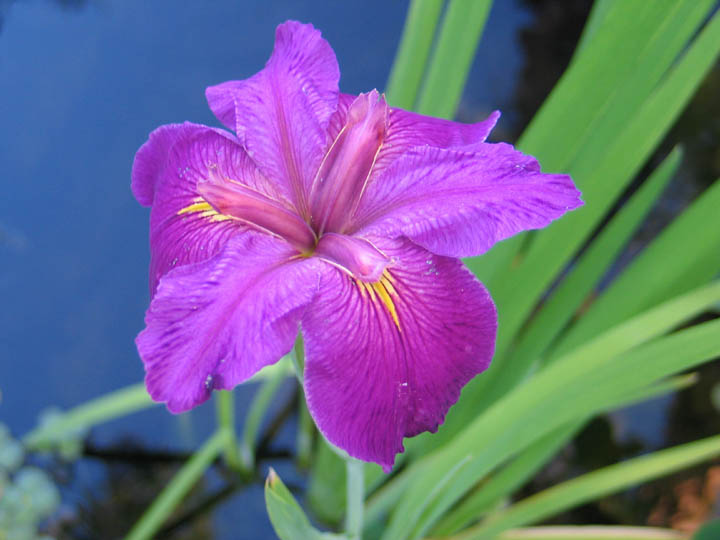- Home
- Search
- Images
- Datasets
- Sample Use
- How to Cite
- Additional Information
- About NEON
- NEON Data Portal
- ASU Biocollections
- About Symbiota
|
Family: Iridaceae |
PLANT: Rhizomatous herbs. STEMS: erect, simple or branched. LEAVES: mainly basal, equitant, linear to ensiform (sword-like). FLOWERS: showy, solitary or few to many borne in paired spathe‑like bracts; perianth 6‑parted, united into a tube at base, the outer 3 tepals (sepals or falls) spreading, sometimes bearded, the inner tepals (petals or standards) erect or arching; stamens 3, opposite the sepals; style branches 3, petaloid, covering the stamens, the apex bifid, the stigmas on the abaxial surfaces. NOTES: 150 spp. N. Temperate zones, particularly Eurasian. (Greek: iris = rainbow) REFERENCES: Mason, Charles T., Jr. 2001. Iridaceae. J. Ariz. - Nev. Acad. Sci. Volume 33(1). Sep spreading or reflexed; pet erect or arching, in our spp. narrower and shorter than the petaloid sep; tep all united below into a perianth-tube; stamens inserted at the base of the sep; ovary 3- or 6-angled or -lobed; style divided distally into 3 petaloid branches arching over the stamens, each 2-lobed at the tip; stigma a thin plate or lip at the outer base of the 2 lobes; fr coriaceous or chartaceous, loculicidal or indehiscent; seeds in 1 or 2 rows per locule; perennial herbs with ensiform or linear lvs, our spp. with horizontal rhizomes and usually erect fl-stalks bearing 1-many fls. 200, N. Temp. Much hybridized in cult. Gleason, Henry A. & Cronquist, Arthur J. 1991. Manual of vascular plants of northeastern United States and adjacent Canada. lxxv + 910 pp. ©The New York Botanical Garden. All rights reserved. Used by permission. |


